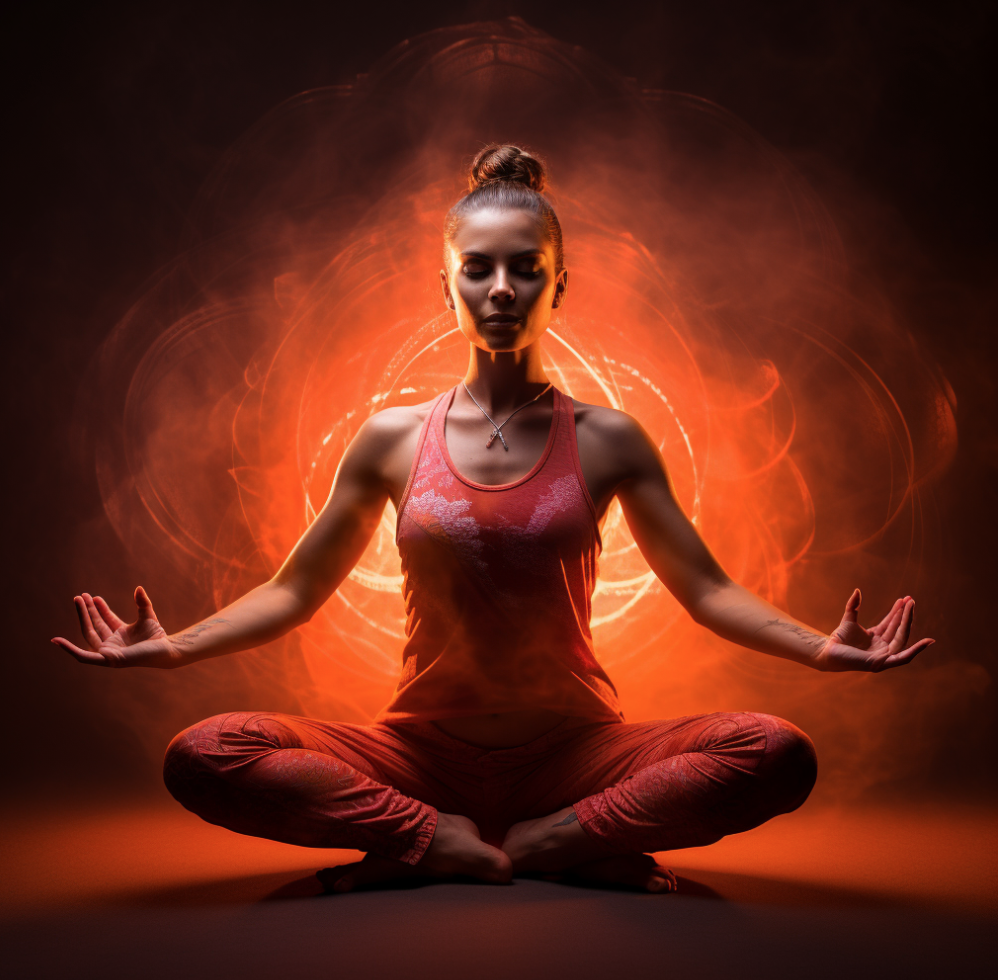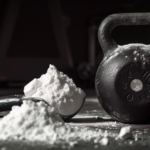Anxiety has become a prevalent issue affecting millions of people worldwide. While there are various approaches to managing anxiety, yoga has emerged as a powerful and holistic practice that offers significant relief.
Learn how doing yoga help you to handle anxiety, plus some basic anxiety poses to get started.
Anxiety Disorders: A Background
Anxiety disorders are the most common mental health condition, affecting nearly 40 million adults in the country every year. While anxiety is a normal human emotion that helps us respond to danger, anxiety disorders are characterized by excessive and persistent worry, fear, and physical symptoms that can significantly interfere with daily life.
The symptoms of anxiety disorders can vary depending on the specific type of disorder, but some common symptoms include:
- Excessive worry and fear
- Restlessness and irritability
- Fatigue
- Difficulty concentrating
- Muscle tension
- Sleep problems
- Panic attacks
How Does Yoga Help with Anxiety?
Feeling overwhelmed by anxiety? You’re not alone. The COVID-19 pandemic has sent anxiety rates soaring, but there’s good news: yoga can be a powerful tool for managing it.
Why yoga? It’s accessible and adaptable, allowing you to practice it anywhere, anytime, regardless of your body type or experience. But there’s more!
When you’re stressed, your body gets stuck in “fight, flight, or freeze” mode. This leads to anxiety, agitation, and physical symptoms like rapid heartbeat. Yoga helps by calming this overactive stress response.
How? Yoga stimulates the vagus nerve, which acts like a brake on the stress response and promotes relaxation. It’s like hitting the “rest and digest” button for your body and mind.
Ready to give it a try? Start with simple yoga poses and breathing exercises. You’ll be surprised how effectively they can help you manage anxiety and find inner peace.
Yoga’s effectiveness in alleviating anxiety can be attributed to its multifaceted approach:
1. Mind-Body Connection: Yoga encourages a harmonious connection between the mind and body, helping individuals become more aware of their thoughts, emotions, and physical sensations. This heightened self-awareness can reduce anxiety symptoms and promote a sense of calm.
2. Stress Reduction: Chronic stress is a significant contributor to anxiety disorders. Yoga practices such as deep breathing exercises (Pranayama) and gentle stretching help activate the body’s relaxation response, lowering cortisol levels and counteracting the physiological effects of stress.
3. Improved Emotional Regulation: Yoga cultivates mindfulness and teaches individuals to observe their thoughts without judgment. By practicing acceptance and detachment on the mat, individuals develop greater emotional resilience, allowing them to respond to stressors more effectively and reduce anxiety.
4. Enhanced Relaxation Response: Certain yoga poses stimulate the parasympathetic nervous system, which is responsible for promoting relaxation and reducing arousal. Incorporating these poses into your daily practice can help induce a state of deep relaxation, alleviating anxiety symptoms.
5. Community Support: Engaging in yoga classes provides a sense of community and support, which can be particularly beneficial for individuals struggling with anxiety. Connecting with others who share similar experiences fosters a sense of belonging and reduces feelings of isolation.
Yoga for Anxiety Poses with images & benefits
Yoga can help with anxiety by focusing on your breath and being present. Below, we’ve curated a beginner-friendly yoga sequence specifically designed to help alleviate anxiety. Each pose is accompanied by step-by-step instructions and its corresponding benefits:
1. Child’s Pose (Balasana)
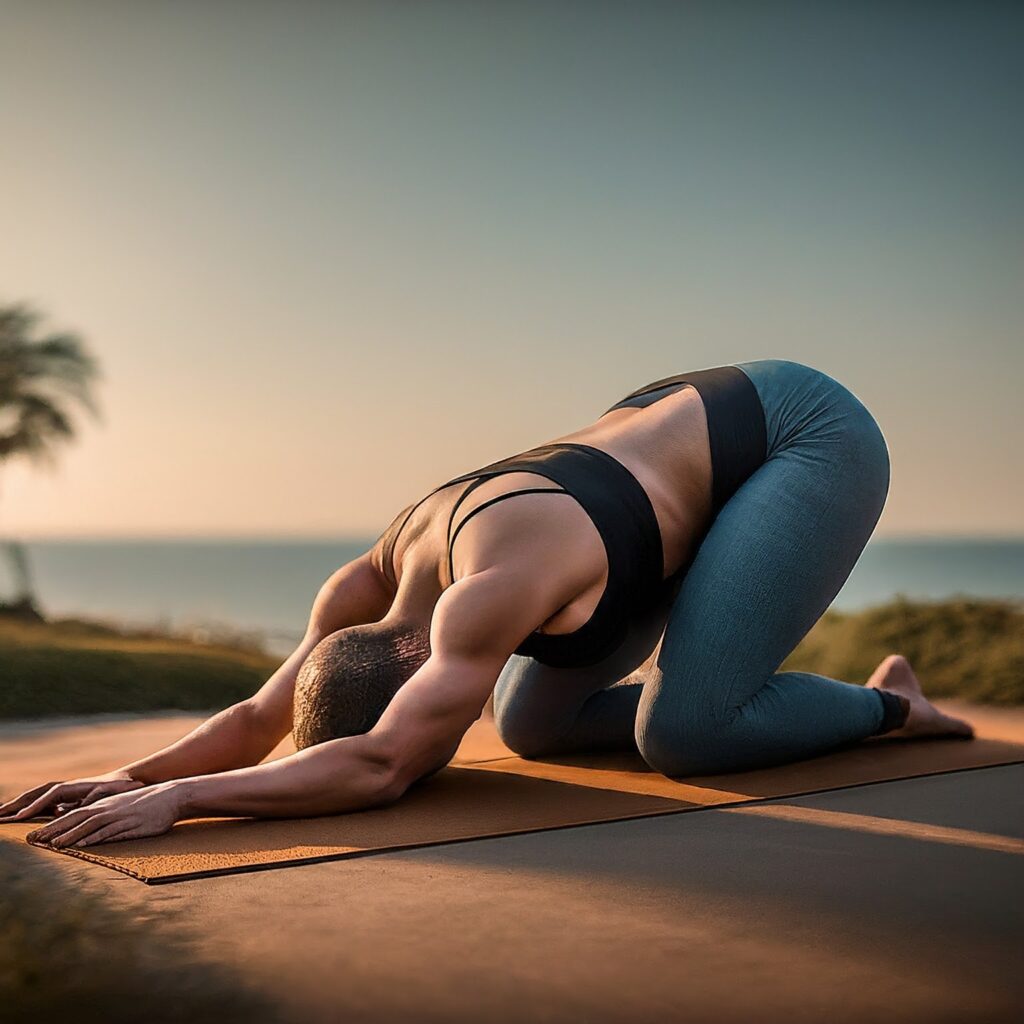
How to Do:
– Begin on your hands and knees, then sit back on your heels with arms stretched out in front or resting by your sides.
– Lower your forehead to the mat and relax your entire body.
Benefits:
– Calms the mind and relieves tension in the back, shoulders, and chest.
– Promotes deep relaxation and soothes the nervous system.
2. Cat-Cow Stretch (Marjaryasana-Bitilasana)
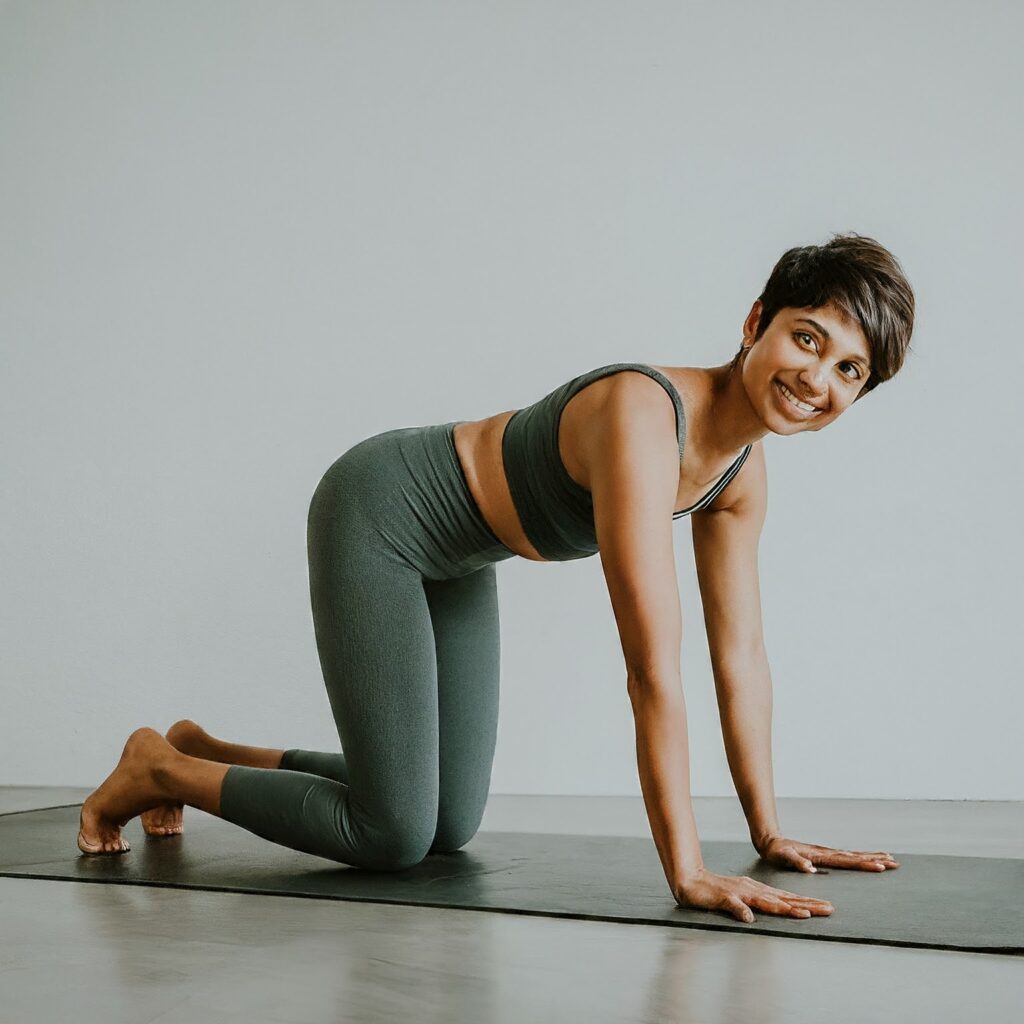
How to Do:
– Start on your hands and knees, with wrists directly under shoulders and knees under hips.
– Inhale, arch your back, lift your chest and tailbone towards the ceiling (Cow Pose).
– Exhale, round your spine, tuck your chin to your chest, and draw your belly button towards your spine (Cat Pose).
Benefits:
– Improves spinal flexibility and releases tension in the back and neck.
– Encourages mindful movement and coordination with breath.
3. Standing Forward Bend (Uttanasana)
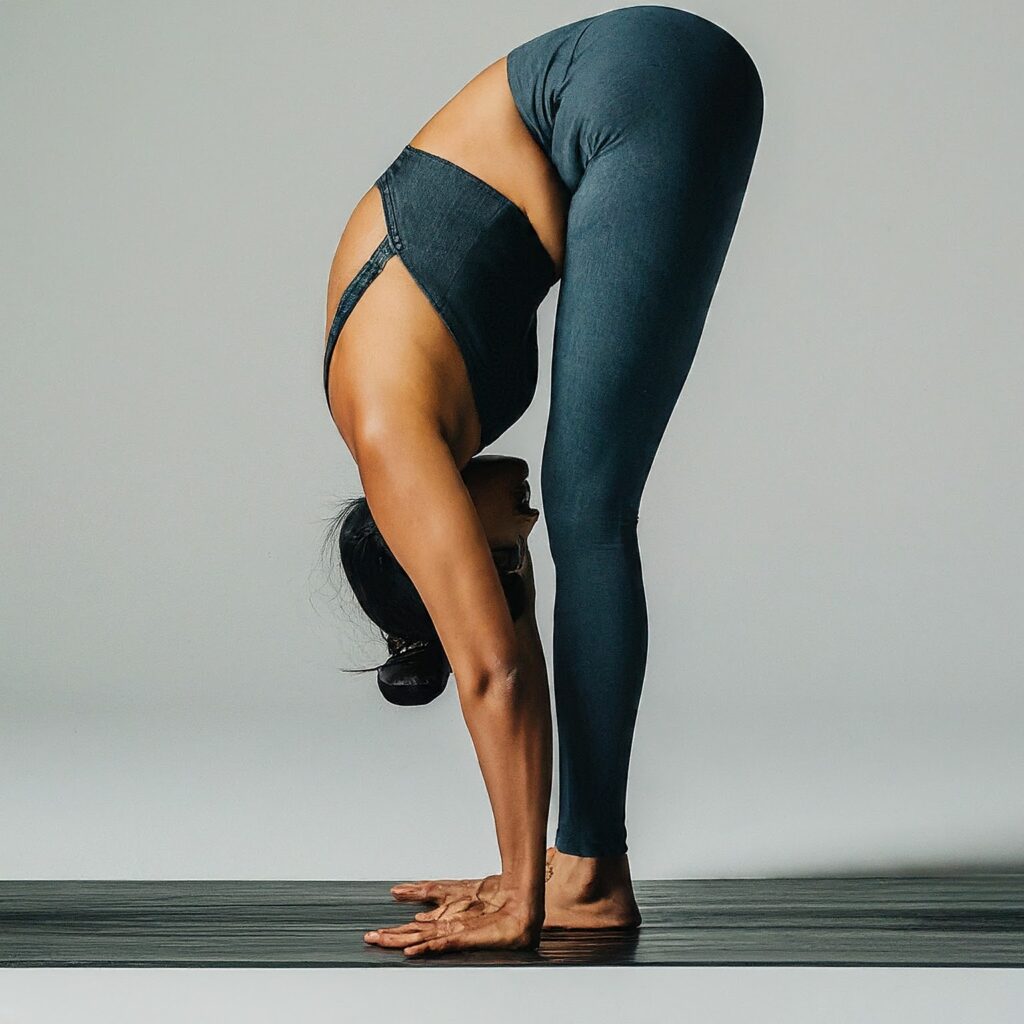
How to Do:
– Stand with feet hip-width apart and hinge at the hips to fold forward.
– Allow your upper body to hang loose, and reach towards the floor or grasp opposite elbows.
– Keep a slight bend in the knees if needed and relax your neck.
Benefits:
– Calms the mind and relieves stress by encouraging blood flow to the brain.
– Stretches the hamstrings, calves, and spine, releasing tension in the body.
4. Legs Up the Wall (Viparita Karani)
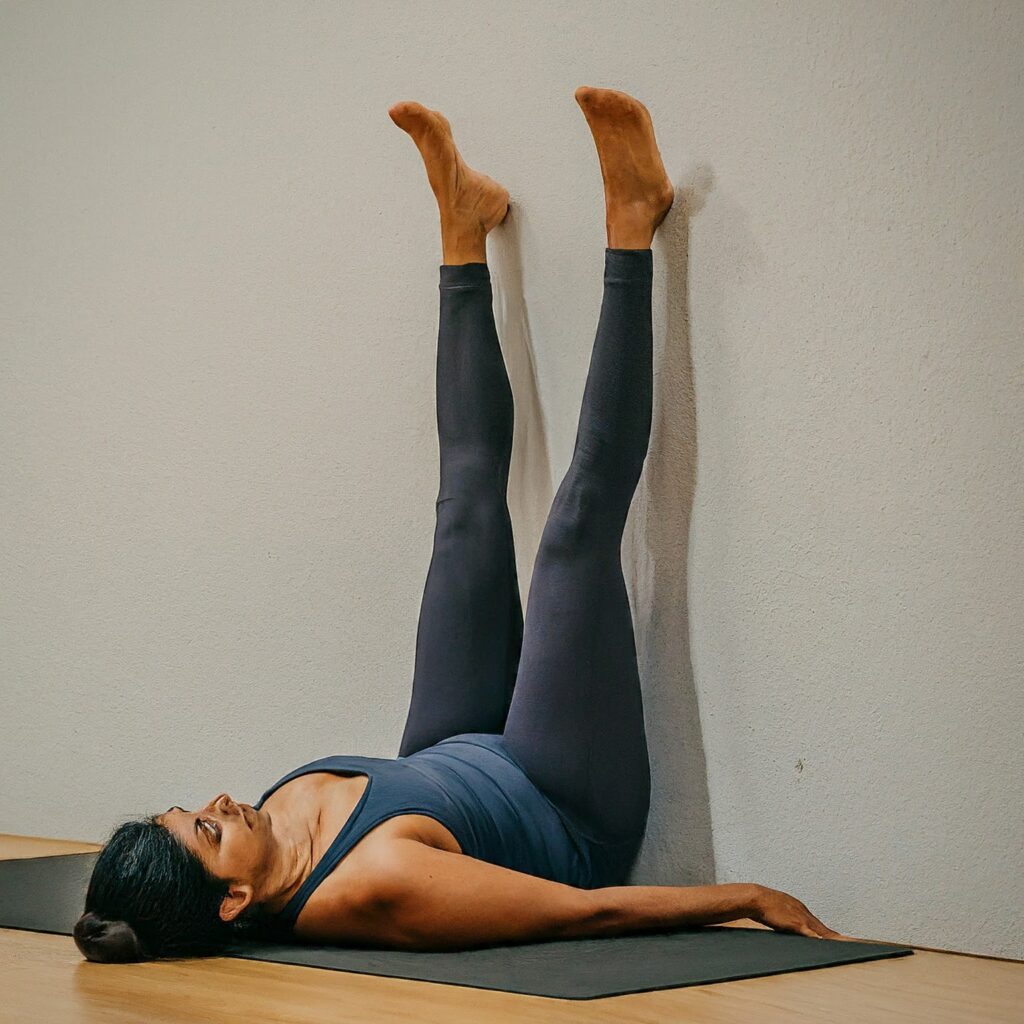
How to Do:
– Sit sideways with one hip against the wall.
– Swing your legs up onto the wall as you lie back on the floor, bringing your hips close to the wall.
– Relax your arms by your sides or place them on your belly.
Benefits:
– Promotes relaxation and reduces anxiety by reversing blood flow and calming the nervous system.
– Relieves swollen legs and feet, making it ideal for those with circulation issues.
5. Corpse Pose (Savasana)
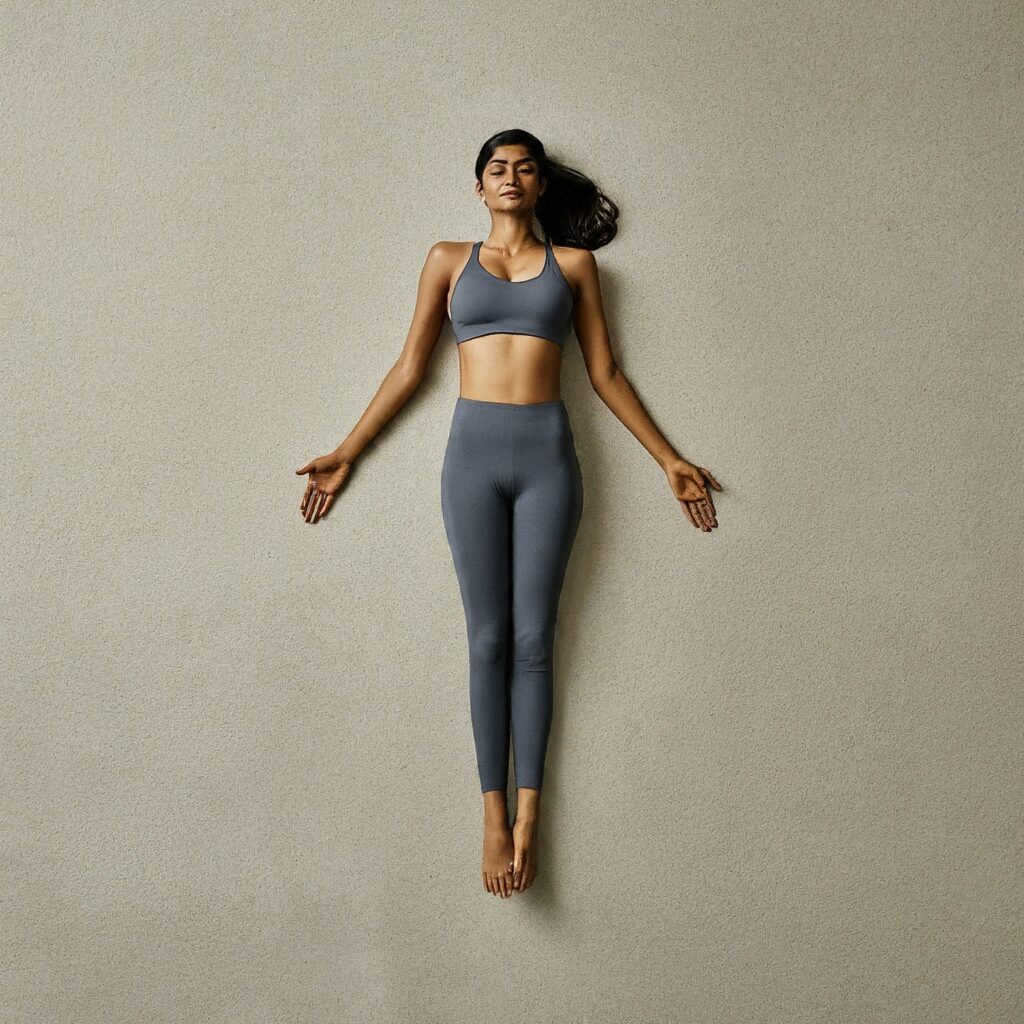
How to Do:
– Lie flat on your back with arms and legs extended comfortably, palms facing up.
– Close your eyes and relax your entire body, allowing yourself to surrender to the ground.
– Focus on your breath and let go of any tension or stress.
Benefits:
– Induces deep relaxation and promotes a state of tranquility.
– Integrates the benefits of your yoga practice, allowing the body and mind to fully unwind.
Incorporating these yoga poses into your daily routine can provide immense relief from anxiety and contribute to overall well-being. Remember to listen to your body and practice mindfulness throughout your yoga journey. With dedication and consistency, yoga can become a powerful tool for managing anxiety and cultivating inner peace.
Research has supported the effectiveness of yoga as an adjunct treatment for anxiety. For example, a meta-analysis of 12 studies found that yoga was effective in reducing anxiety symptoms, with moderate to large effect sizes. Another study found that yoga was as effective as cognitive-behavioral therapy (CBT) in reducing anxiety symptoms in individuals with generalized anxiety disorder.
Overall, yoga is a safe and effective adjunct treatment for anxiety that offers a range of benefits, including stress reduction, improved sleep, increased self-awareness, and enhanced resilience.
Take the first step towards a calmer mind and a healthier body by embracing the transformative practice of yoga for anxiety relief. Namaste.
Read Also – About Star Pose Yoga
References – https://mhanational.org/issues/state-mental-health-america

